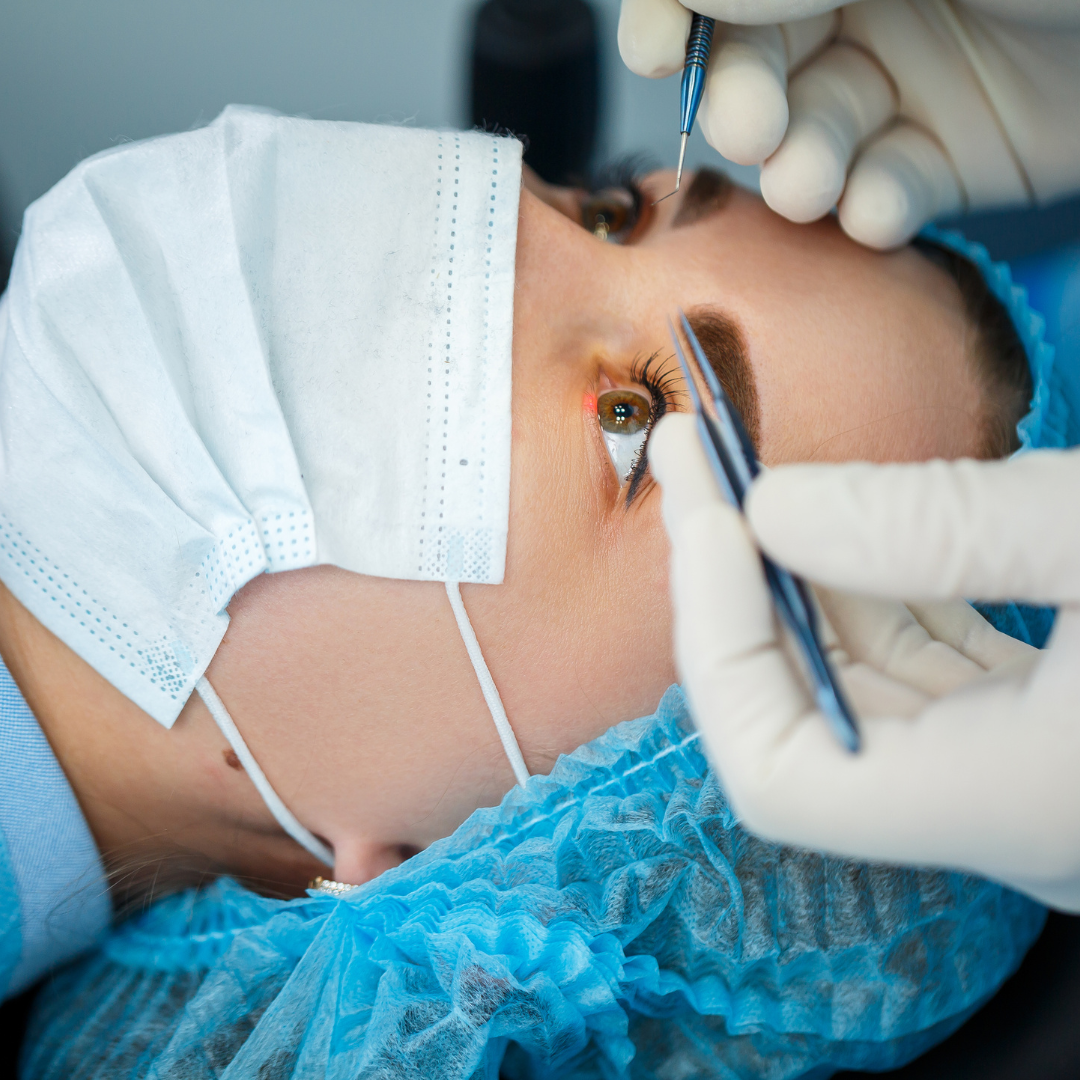Key Takeaways:
- CBG's Potential in Eye Health: CBG is gaining attention for its ability to potentially reduce intraocular pressure and protect the optic nerve without the psychoactive effects associated with other cannabinoids.
- Importance of Research and Consultation: Despite CBG's promising benefits for glaucoma, further research and consultation with healthcare professionals are essential to fully understand and safely utilize its therapeutic potential.
- Choosing the Right CBG Product: Selecting a high-quality, third-party tested CBG product is crucial for ensuring safety, efficacy, and the best possible outcomes in glaucoma treatment.
Cannabigerol (CBG), known as the "mother of all cannabinoids," is gaining attention in eye health, especially for glaucoma treatment. Unlike THC and CBD, CBG is less common but shows promise in managing eye pressure and protecting the optic nerve, crucial for vision. As interest grows in natural solutions for health, CBG emerges as a potential natural alternative to traditional glaucoma treatments, highlighting its importance in eye health care.
Elevate Your Wellness Journey With Chill Frog
Embrace a holistic approach to wellness. Explore Chill Frog Gummies now! |
Understanding Glaucoma
Glaucoma encompasses a variety of eye conditions that lead to damage to the optic nerve. These are primarily caused by increased intraocular pressure (IOP). Over time, this pressure can inflict permanent damage to the optic nerve, resulting in gradual vision loss or even blindness. Glaucoma is particularly insidious because it progresses slowly and often without early symptoms, making it a leading cause of irreversible blindness worldwide.
Causes And Risk Factors
Glaucoma's primary risk factor is elevated intraocular pressure, resulting from an imbalance in the production and drainage of aqueous humor, the eye's nourishing fluid. Other factors contributing to risk include age (particularly individuals over 60), a family history of glaucoma, certain medical conditions like diabetes or hypertension, and extensive use of corticosteroids. Ethnic background also plays a role, with African Americans and Asians being at a higher risk compared to others.
Symptoms To Watch For
In its early stages, glaucoma usually presents no symptoms, making it challenging to detect without regular eye examinations. As the condition progresses, symptoms may begin to emerge, such as peripheral vision loss, seeing halos around lights, mild eye pain, blurred vision, and in advanced cases, significant vision loss. These symptoms can lead to difficulties in daily activities, underscoring the importance of early detection and treatment to preserve vision.
The Science Behind CBG: How It May Benefit Glaucoma Patients
Cannabigerol (CBG) is a cannabinoid derived from the cannabis plant, less prevalent than THC and CBD but notable for its potential therapeutic benefits. As the non-psychoactive precursor to THC and CBD, CBG is gaining prominence in medical research for its potential to treat various conditions, including glaucoma. Its unique interaction with the body’s endocannabinoid system, particularly in regulating intraocular pressure and neuroprotection, positions CBG as a compound of interest for eye health.
The Role Of CBG In The Endocannabinoid System
The endocannabinoid system (ECS) plays a pivotal role in maintaining bodily homeostasis, including the regulation of intraocular pressure. CBG interacts with the ECS by binding to both CB1 and CB2 receptors, which are found throughout the body, including the eye tissues. This interaction is thought to influence the aqueous humor's production and drainage, potentially reducing the elevated intraocular pressure characteristic of glaucoma.
CBG's Effect On Eye Pressure And Health
Early studies into CBG have shown promising results in its ability to decrease intraocular pressure, a key factor in glaucoma management. While research is still in its infancy, preliminary animal studies suggest that CBG may improve aqueous humor outflow, thereby reducing eye pressure. Furthermore, its neuroprotective properties may protect the optic nerve from damage caused by high intraocular pressure, offering a dual approach to glaucoma treatment.
Comparing CBG With Traditional Glaucoma Treatments
Standard Treatments For Glaucoma
Traditional glaucoma treatments focus on lowering intraocular pressure (IOP) to prevent damage to the optic nerve. These methods include prescription eye drops, oral medications, laser therapy, and various surgical procedures. Eye drops, such as beta-blockers or prostaglandin analogs, are often the first line of treatment but can come with side effects like eye irritation, systemic effects, and the need for lifelong use. Laser treatments and surgeries aim to improve the eye's drainage capabilities but carry risks and complications, such as infection or further vision loss.

Advantages Of CBG Over Conventional Options
CBG offers a natural alternative that may complement or, in some cases, offer advantages over traditional glaucoma therapies. Its potential to reduce IOP through the modulation of the endocannabinoid system, with fewer side effects, is particularly appealing. Moreover, CBG's neuroprotective effects could offer additional protection against optic nerve damage, beyond just IOP reduction.
Integrating CBG With Other Glaucoma Therapies
The prospect of integrating CBG into existing glaucoma treatment regimens opens new avenues for comprehensive care. Combining CBG with conventional treatments could potentially enhance therapeutic outcomes, offering a multi-pronged approach to managing glaucoma. However, it is crucial to consult healthcare professionals before combining treatments to ensure safety and efficacy.
Potential Side Effects And Considerations Of Using CBG For Glaucoma
Common Side Effects Of CBG
While CBG is generally well-tolerated and considered safe for most individuals, some may experience mild side effects. These can include dry mouth, slight changes in appetite, dizziness, or gastrointestinal discomfort. It's important to note that the side effects of CBG is significantly milder compared to products with THC, making it an attractive option for those looking for natural alternatives.
Precautions And Contraindications
Although CBG has a favorable safety profile, certain individuals should exercise caution or consult a healthcare provider before using it. People taking prescription medications, especially those with a narrow therapeutic index, pregnant or breastfeeding women, and individuals with complicated health conditions, should discuss the use of CBG with a medical professional. This ensures that CBG does not interfere with existing treatments or conditions.
Discussing CBG Use With A Healthcare Provider
Before incorporating CBG into a glaucoma treatment regimen, it's crucial to have a thorough discussion with an eye care specialist or healthcare provider. This conversation should cover the potential benefits and risks, the appropriate dosage, and how CBG might interact with existing treatments. A healthcare provider can also offer guidance on monitoring for any adverse effects and adjusting treatment as necessary.
How To Choose The Right CBG Product For Glaucoma
Types Of CBG Products Available
The market offers a variety of CBG products, including oils, tinctures, capsules, and topical formulations. Each type of product may suit different preferences and needs. For example, CBG oil can be taken orally or added to food and drinks, providing ease of use and dosage control. Capsules offer a convenient and discreet option, while topical products are ideal for those who prefer not to ingest CBG.

Factors To Consider When Choosing A CBG Product
When selecting a CBG product for glaucoma, it's important to consider the product's quality, concentration, and the manufacturer's reliability. Look for products that have been third-party tested, with lab results available to confirm their cannabinoid content and purity. The concentration of CBG in a product can also influence its effectiveness, so selecting a product with an appropriate strength is crucial.
The Importance Of Quality And Purity In CBG Products
Given the unregulated nature of the cannabis market, the quality and purity of CBG products can vary widely. High-quality, pure CBG products are more likely to deliver the desired therapeutic effects without harmful contaminants. Always opt for products from reputable manufacturers that provide transparency about their sourcing, manufacturing processes, and testing standards. This ensures you receive a safe and effective product for managing glaucoma.
Final Thoughts
The exploration of CBG as a natural, effective solution for glaucoma looks promising. It shows potential to reduce intraocular pressure, protect the optic nerve, and offers a favorable side effect profile. Nonetheless, it is crucial to act cautiously and with professional guidance. With the scientific community continuing to unravel the complexities of cannabinoids and their impact on health, CBG stands out for its therapeutic promise and as a new avenue of holistic health solution.
Read also:
- CBG Revealed: The 'Mother' Cannabinoid With Surprising Benefits
- Anxiety Relief: Comparing The Calming Effects Of CBD vs CBG
- CBG vs THC: A Deep Dive into Their Uses and Effects
Frequently Asked Questions
What causes glaucoma?
It is primarily caused by nerve damage due to increased eye pressure from the buildup of aqueous humor, which can block and damage optic nerve tissues.
What research supports CBG's effectiveness for glaucoma?
Studies from 1990 and 2008 indicate CBG can significantly reduce intraocular pressure and may offer vasodilator and neuroprotective properties beneficial for glaucoma treatment.
Is CBG legal?
Both CBG and CBD are federally legal in the U.S. if sourced from hemp and contain less than 0.3% Delta-9 THC, thanks to the 2018 Farm Bill.
How does CBG compare to CBD?
CBG and CBD share non-psychoactive properties and potential health benefits, such as anti-inflammatory effects, but CBG may specifically help with glaucoma by reducing eye pressure and stimulating appetite.
Can CBG cure glaucoma?
There is no current evidence to suggest that CBG can cure glaucoma. It may help manage symptoms, particularly intraocular pressure, but more research is needed.
How should CBG be used for glaucoma?
It's important to consult with a healthcare provider for personalized advice. Research suggests potential benefits, but dosages and administration methods should be discussed with a medical professional.
What are the forms of CBG available?
CBG can be found in various forms similar to CBD, including oils, tinctures, and topical applications. Availability may vary based on legal and market factors.
How does CBG affect intraocular pressure?
CBG may help reduce intraocular pressure by improving aqueous outflow in the eye, which could alleviate the pressure contributing to glaucoma.
What distinguishes CBG from other cannabinoids in treating glaucoma?
Unlike THC, which can lower eye pressure but with psychoactive effects, CBG offers a non-psychoactive alternative that may still reduce intraocular pressure.
Can CBG be combined with other treatments for glaucoma?
While potentially beneficial, CBG should be used in consultation with a healthcare provider, especially when considering combinations with other glaucoma treatments.
Sources:
- Luz-Veiga, M., Amorim, M., Pinto-Ribeiro, I., Oliveira, A.L., Silva, S., Pimentel, L.L., Rodríguez-Alcalá, L.M., Madureira, R., Pintado, M., Azevedo-Silva, J., & Catalão, J. (2023). Cannabidiol and Cannabigerol Exert Antimicrobial Activity without Compromising Skin Microbiota. International Journal of Molecular Sciences, 24.
- Pérez, E., Fernández, J.R., Fitzgerald, C., Rouzard, K., Tamura, M., & Savile, C.K. (2022). In Vitro and Clinical Evaluation of Cannabigerol (CBG) Produced via Yeast Biosynthesis: A Cannabinoid with a Broad Range of Anti-Inflammatory and Skin Health-Boosting Properties. Molecules, 27.
- Nachnani, R., Raup-Konsavage, W. M., & Vrana, K. E. (2021). The pharmacological case for cannabigerol. Journal of Pharmacology and Experimental Therapeutics, 376(2), 204-212.
- Deiana, S. (2017). Potential medical uses of cannabigerol: a brief overview. Handbook of cannabis and related pathologies, 958-967.
- Borrelli, F., Fasolino, I., Romano, B., Capasso, R., Maiello, F., Coppola, D., ... & Izzo, A. A. (2013). Beneficial effect of the non-psychotropic plant cannabinoid cannabigerol on experimental inflammatory bowel disease. Biochemical pharmacology, 85(9), 1306-1316.